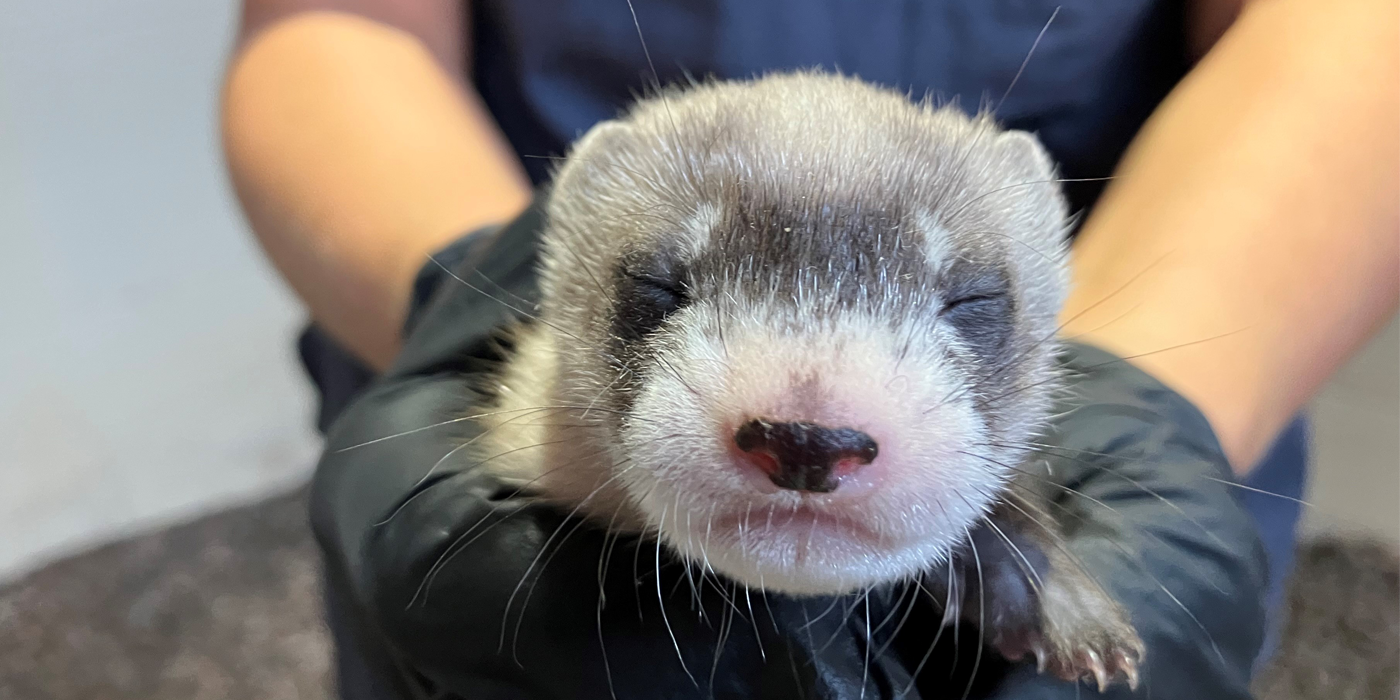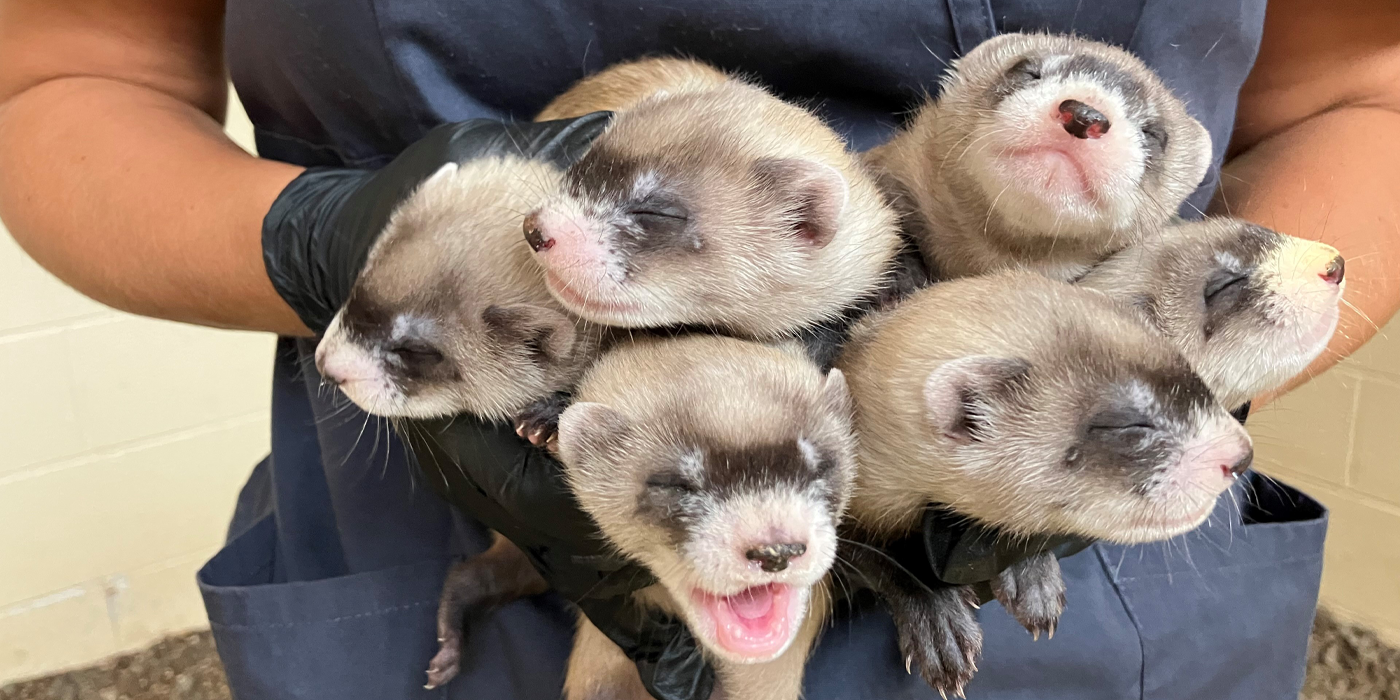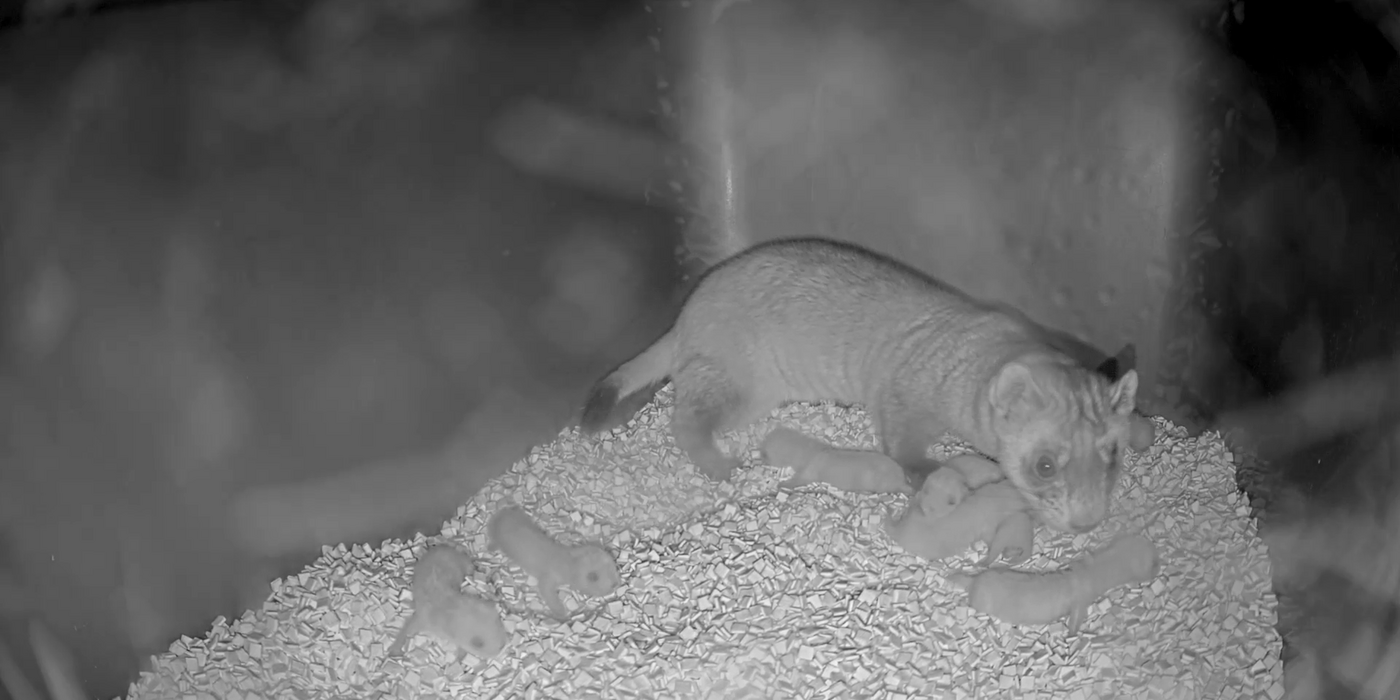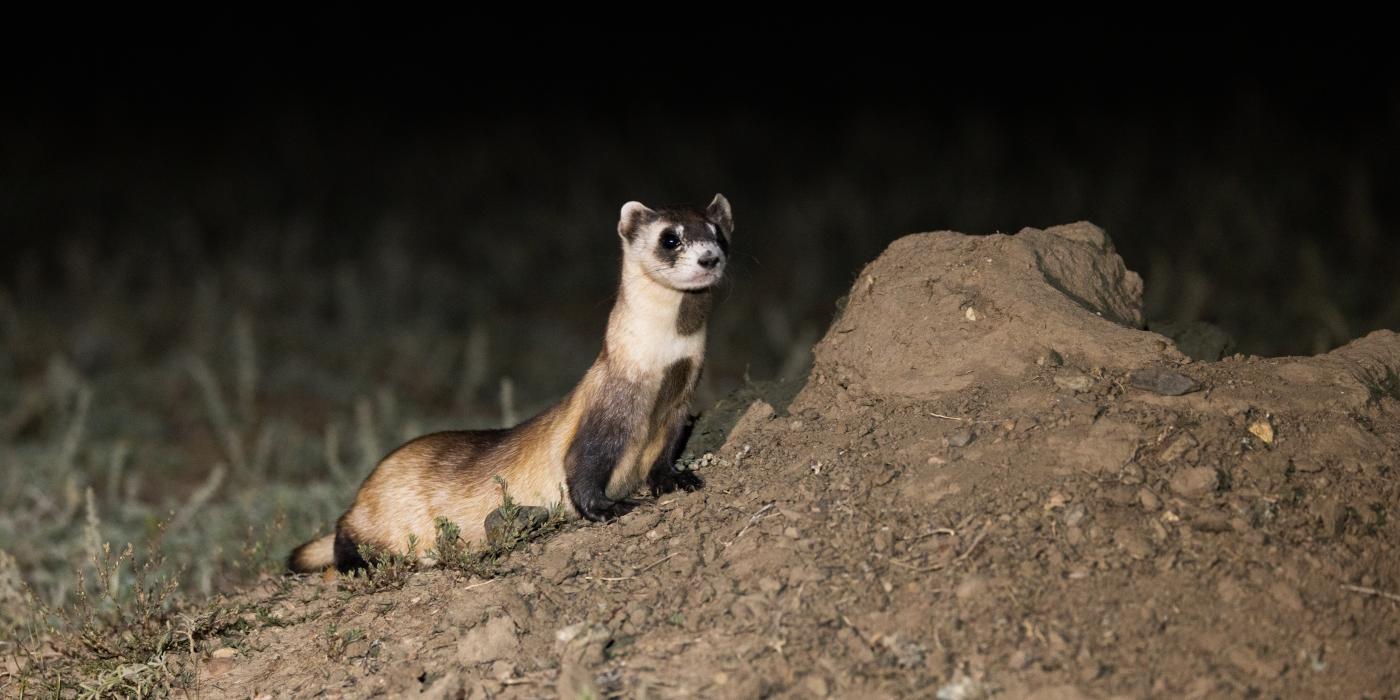Black-footed Ferret Kit Update: A Snack-tacular Milestone

For the last several weeks, animal fans from all over the world have tuned into our Black Footed Ferret Cam to watch 1-year-old mom Hickory raise her six newborn kits at the Smithsonian Conservation Biology Institute. And, we’re excited to say that these tiny endangered babies just hit a new milestone: the kits have just passed one month old!
As of July 5, they are now 38 days old, which is an exciting time in their development.
For starters, their coloring is changing. When they’re first born, they are pink with very fine, soft fur. But now, the kits are starting to look more like adults, with that classic coloring that makes them so recognizable—black legs, a white face, and the black pattern over their eyes that almost makes them look like they’re wearing a mask. And speaking of eyes, the 1-month mark is also the time their eyes start to open and their ears start working properly.
Another change we can expect to see is that the kits will start eating solid food. Around this time, ferret kits’ deciduous teeth start coming in.

Black-footed ferrets are obligate carnivores, meaning their diet consists entirely of meat. In the wild, this diet allows them to perform an important ecological role: when they eat small mammals such as prairie dogs, rats and mice, they help keep these species from overpopulating, which keeps the local prairie ecosystem in balance. That’s why it’s important to make sure that we’re feeding the kits lots of meat early in their development… especially since we’re hoping that some of the kits in this litter will be reintroduced into the wild.
The kits will also continue to nurse from Hickory for a couple more months. Hickory will sometimes bring her rats into the box—our adult black-footed ferrets are given whole rats two days a week as part of their diet—so viewers may see the kits trying some of mom’s food too.
Finally, I want to say that Hickory is doing a wonderful job with her first litter. She is a very calm mom and her kits have done great so far. There haven’t been any surprises with this litter. That’s a good thing! It’s always a bit of an unknown how first-time ferret moms will do, but Hickory has been excellent the entire time.
As always, thanks for reading and be sure to keep your eyes on the Black-Footed Ferret Cam in the coming weeks. We’re hoping to share many more exciting milestones for these kits!
What do black-footed ferrets sound like? Where do they live? What do they eat? Check out some of the most-searched questions about black-footed ferrets, North America’s only native ferret species!
Related Species:



